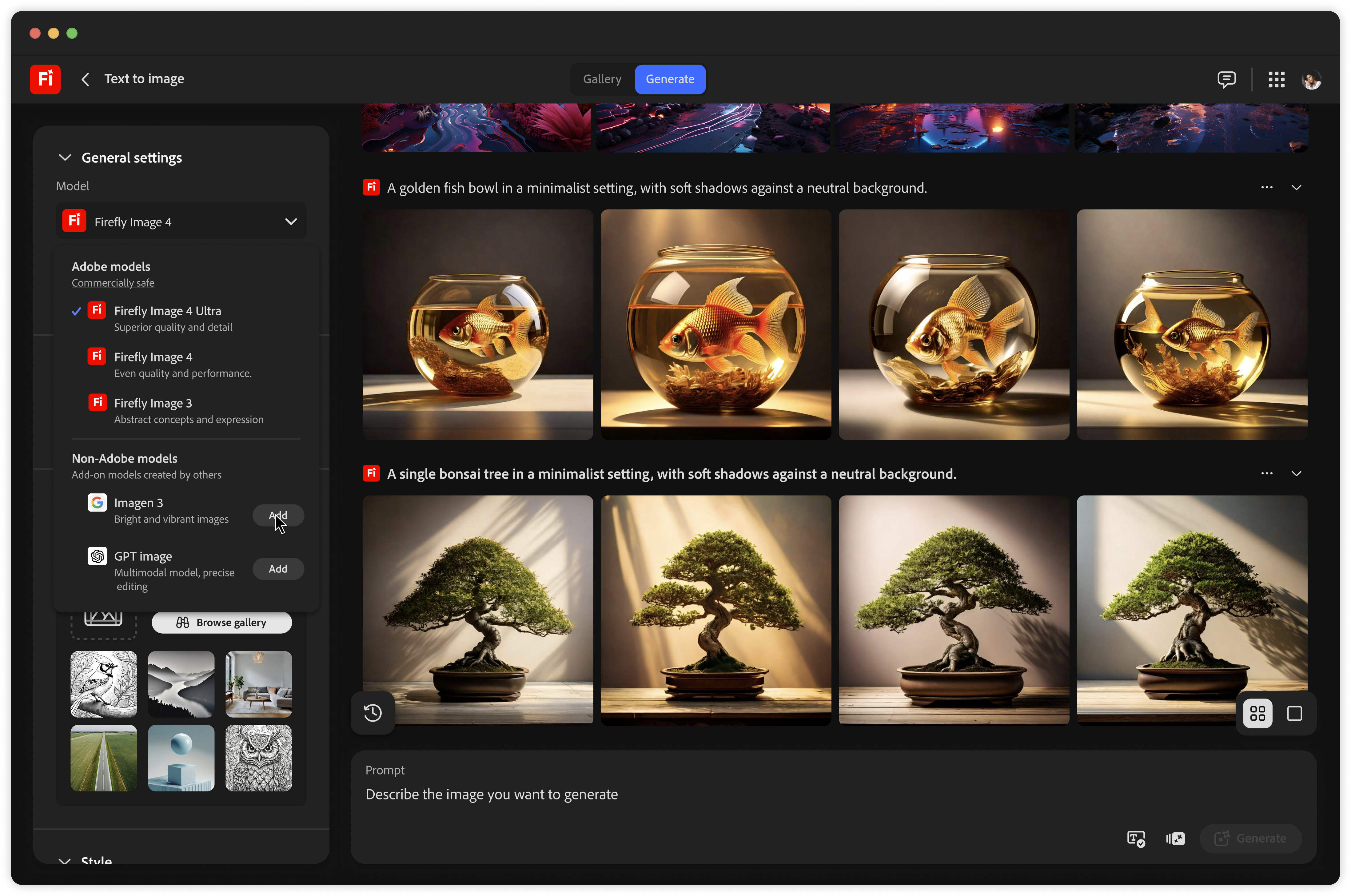
Today at Adobe MAX London I'll get to see and hear just what is coming to Photoshop, Illustrator, Fresco and other digital art software but the through-line linking everything is more AI. Love it or hate it, Adobe isn't holding back on its push for these new integrated tools
At the forefront of this move to more AI is Adobe’s Firefly web app and gen AI model, a suite of generative AI tools designed to streamline ideation, enhance content creation, and push the boundaries of creative production. Adobe is well aware of the issues around greater use of AI in art and design, hence it's investment and launch of the Content Authenticity web app to enable artists to 'track' and display how an image was made and by whom.
To learn more, I sat down with Alexandru Costin, Adobe’s chief product officer, ahead of Adobe MAX London to get a dive deep into the company’s approach to AI, its new tools, and how the Adobe envisions the future of creativity.
“Firefly is our all-in-one platform for creativity,” Alexandru explains enthusiastically, revealing that the launch of Firefly Model 4 Ultra will bring even more powerful tools to Adobe’s suite. Firefly Model 4 Ultra, an advanced version of the generative model, promises improved human rendering and stylisation, as well as unlimited potential for image generation.
In a demo the night before MAX London I got to see Firefly Model 4 Ultra in action, and yes it does look more photo real than previous AI models from Adobe, but there remains a level of stylisation to elements like hair that breaks the illusion these images are of real people. But, it remains impressive.
The addition of new features like the SVG export in the Firefly vector module and interactive lower resolution modes for rapid ideation shows Adobe’s commitment to offering both quality and speed for creatives.

Adobe Firefly and friends
“We’re constantly evolving our platform to meet the needs of next-gen creatives,” Alexandru says. This includes Firefly’s integration with multiple AI models from other providers like Google's Imagen, Flux, Runway and others, responding to customer demand for diversity in AI options while maintaining Adobe’s commitment to data privacy.
This move to allow third-party AI models into the Firefly workflow will raise eyebrows, as while Adobe has gone to great lengths to develop an 'ethical' AI based on opting in, and some initial partners like Flux make the same commitment (though opaquely), while the inclusion of OpenAI is a clear issue.
“We’re offering the same level of privacy protection for our users as we’ve always done with Firefly. This means we don’t train on your prompts or images. Our partnerships with other providers like OpenAI ensure that when you use their models through Adobe, your content remains your own,” says Alexandru.
One of the most exciting developments coming with Firefly is the launch of Firefly Boards (formerly Project Concept AI), a collaborative infinite canvas where teams can work in real-time to remix images, generate new content, and combine elements from various AI models. This new feature aims to simplify the creative workflow by allowing teams to work together seamlessly within Adobe’s ecosystem.
Boards, in its Project Concept stage, is something I saw at MAX Miami last year, and impressed, mostly because it finally enables greater control over the outcomes of an generative AI image.

Content Credentials remain intact
But what happens when you merge content from different AI models? You can, for example have images from Firefly, Flux and Imagen in one 'board' and remix them into one new gen AI creation.
Alexandru explains that when users create a new image by remixing elements from different sources, each element is traced back to its origin. The process is transparent: the system generates a detailed prompt based on the selected elements, preserving the integrity of each model used and ensuring clear attribution through Adobe’s Content Credentials.
The focus on transparency is key, especially when it comes to the blending of various generative AI models. Images are clearly tagged with the model used, and the commercial safety of the content is paramount to Adobe, explains Alexandru.
In line with its mission to make creativity accessible to everyone, Adobe is taking steps to ensure that AI tools are available on all devices. The idea is to further "democratise" access to generative AI tools for creators on the go.
“Our goal is to make creative power available to everyone, whether you’re working on a desktop or on your mobile phone,” says Alexandru. “This is just the beginning. With AI-powered voice input, mobile access to Firefly, and a mobile website, we’re enhancing the creative experience for users everywhere.”

Photoshop gets Agentic
When it comes to Photoshop, the integration of AI represents a major shift in user experience. Alexandru talks about a new feature that will bring natural language understanding to Photoshop users, enabling them to interact with the program via voice or text prompts.
This is part of Adobe’s broader strategy to redesign how artists engage with Adobe's creative tools, making the software more intuitive and accessible to beginners while still catering to advanced professionals.
“We’ve always believed in making tools accessible, whether you’re a student, a professional, or a hobbyist. The introduction of AI will allow us to further reduce the learning curve, making complex tools like Photoshop more approachable,” says Alexandru.
The new “Actions Panel,” for instance, means you can see a live preview of actions and apply them on their documents, helping with learning Photoshop’s advanced features quickly. This kind of "agentic AI" could open up Adobe's apps to more people, or help those of us stuck in our way find new tools and workflows. Cynically we could say Adobe is turning Photoshop into an AI chatbot, but behind that lays an interesting new way of using software.
Alexandru emphasises that Adobe’s AI tools aren’t just for professionals, they’re designed with a wide variety of users in mind. From students and small business owners to creative professionals, Adobe is looking to serve the entire spectrum of creators, and this is where the friction happens – Adobe clearly sees a path to a broader user-base and is trying to square the circle of being a professionals's creative toolbox and a casual user's draw of useful apps.

Creativity for all?
With Firefly, Creative Cloud, and Adobe Express, Adobe is ensuring that its software and tools cater to everyone, whether they need pixel-perfect control or simpler, more accessible experiences. The big question is, will some be left behind or forced away as Adobe casts its net wider?
At the heart of Adobe’s AI strategy is the belief that creativity should be accessible to all. Whether through its AI-powered tools, its focus on data privacy, or its commitment to user-centric design, Adobe is creating an ecosystem where anyone can express themselves creatively, no matter their background or skill level.
Alexandru smiles and tells me, how he believes "technology is cool" but pure 'technology' alone "doesn't benefit anybody […] everything we do is designed to make creativity work across consumer, student, SMB and professional [uses]. Everything we do is to benefit creativity".







